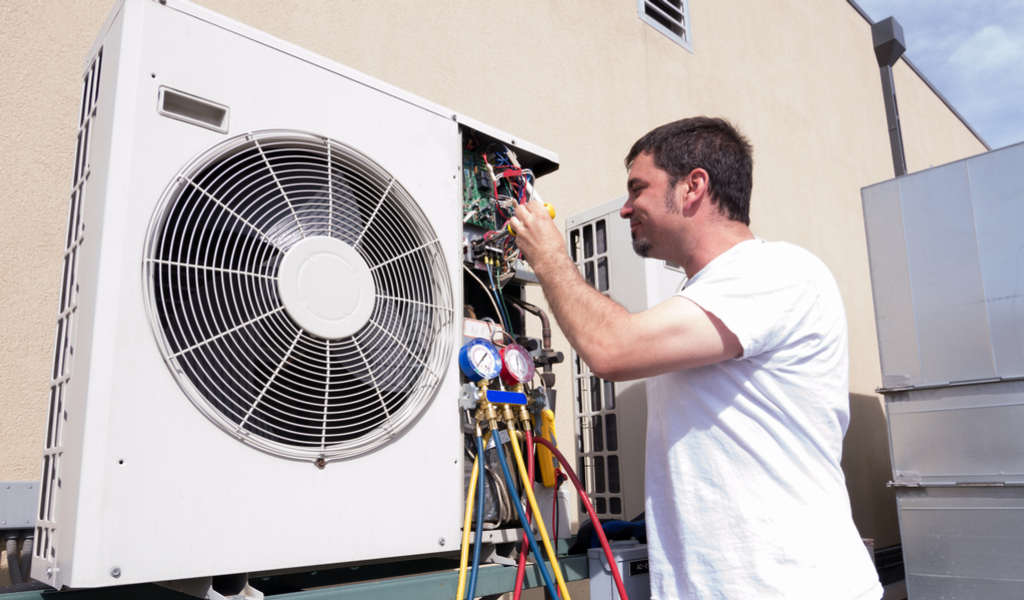However, like any other mechanical system, your split-system AC unit has a finite lifespan and will eventually require replacement. But how do you know when it’s time to replace your split-system AC unit? In this article, we will explore the signs that indicate it’s time for a split-system AC replacement.
What is a Split-System AC Unit?
Before we delve into the signs of when to replace a split-system AC unit, let’s first understand what it is. A split-system AC unit, also known as a ductless mini-split AC, consists of two main components: an indoor unit and an outdoor unit. The indoor unit is installed inside your home, while the outdoor unit is installed outside.
These units are connected by refrigerant lines and electrical wiring. The indoor unit is responsible for blowing cool air into your home, while the outdoor unit houses the compressor, condenser, and other crucial components that work together to cool the refrigerant and expel the hot air outside.
Split-system AC units are popular because they are energy-efficient, versatile, and do not require ductwork, making them ideal for homes without existing duct systems.
Signs Indicating It’s Time for a Split-System AC Replacement:
Like any other appliance, AC units have a limited lifespan and will eventually require replacement. Knowing when to replace your split-system aircon can save you from unnecessary expenses, inconvenience, and discomfort. Below are some signs that indicate it’s time for a split-system AC replacement.
1. Age of the AC Unit:
The age of your aircon unit is one of the primary indicators that it may be time for a replacement. Typically, the average lifespan of a split-system AC unit is around 10 to 15 years, depending on the make and model, as well as how well it has been maintained.
If your AC unit is nearing or has surpassed this age range, it may be time to start considering a replacement. As AC units age, their efficiency decreases, and they become more prone to breakdowns, which can lead to increased energy bills and costly repairs.
2. Frequent Repairs:
If you find yourself constantly calling for AC repairs and the repair bills are piling up, it may be more cost-effective to replace your AC unit rather than continuing to invest in repairs. As AC units age, they may require more frequent repairs to keep them running, and the costs can add up quickly.
Additionally, older AC units may require replacement parts that are difficult to find or expensive, further increasing the cost of repairs. If you find yourself spending a significant amount of money on repairs, it may be time to consider a replacement to avoid further expenses.
3. Rising Energy Bills:
Another sign that it may be time for a split-system AC replacement is a steady increase in your energy bills. As AC units age, their energy efficiency may decline, resulting in increased energy bills. Older AC units tend to have lower energy efficiency ratings, thus older units may struggle to maintain the desired temperature in your home or commercial space, leading to longer running times and higher energy consumption.
If you notice a significant spike in your energy costs despite using your AC system as you normally would, it could indicate that your unit is not operating efficiently and may need to be replaced. Upgrading to a newer, energy-efficient system can save you money on your monthly energy bills, making it a wise long-term investment.
4. Inadequate Cooling:
If you notice that your AC unit is struggling to cool your home or commercial space evenly or is not providing the same level of comfort it used to, it may be a sign that it’s time for a replacement. Over time, AC units can lose their cooling capacity, and their ability to distribute cool air evenly throughout your space may diminish.
This can result in hot spots, uneven cooling, or discomfort in certain areas of your home or commercial space. If you’re constantly adjusting the thermostat or if you’re unable to achieve the desired comfort level, it may be time to replace your AC unit.
5. Noisy Operation:
Unusual or excessive noise coming from your AC unit can be a sign of a problem. AC units are designed to operate quietly, and any sudden increase in noise levels may indicate a malfunction or a worn-out component.
If you notice grinding, rattling, or banging noises coming from your AC unit, it may be a sign that it’s time for a replacement. Continuing to operate a noisy aircon unit can result in further damage and may lead to a complete breakdown.
6. Poor Indoor Air Quality:
AC units play a significant role in maintaining indoor air quality by filtering out dust, pollen, and other airborne pollutants. However, as AC units age, their air filtration system may become less effective, resulting in poor indoor air quality.
If you notice an increase in dust, allergens, or other pollutants in your indoor air, it may be a sign that your AC unit is no longer effectively filtering the air, and a replacement may be necessary to maintain a healthy environment.
7. Frequent Refrigerant Leaks:
Refrigerant is a critical component of your split-system AC unit, as it is responsible for absorbing and releasing heat, allowing your system to cool the air. If you notice that your AC system is frequently experiencing refrigerant leaks, it could be a sign of an underlying issue.
Refrigerant leaks can cause your system to lose its cooling capacity, resulting in reduced performance and increased strain on the system. Constantly refilling the refrigerant can be expensive and is not a long-term solution. If your AC system is experiencing frequent refrigerant leaks, it may be an indication that your unit is reaching the end of its lifespan and needs to be replaced.

